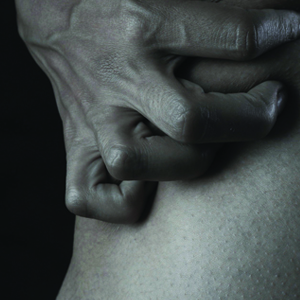Chronic Pain and Its Link to Hormones
 Relief from chronic pain is one of the top reasons that people seek medical attention, and the abuse of prescription pain relievers is at an all-time high. This begs the question: what is causing all this pain? And, furthermore, is resorting to addictive and potentially dangerous narcotics the only answer?
Relief from chronic pain is one of the top reasons that people seek medical attention, and the abuse of prescription pain relievers is at an all-time high. This begs the question: what is causing all this pain? And, furthermore, is resorting to addictive and potentially dangerous narcotics the only answer?
We believe that the link between hormone imbalances and the prevalence of chronic pain deserves further exploration. Consider these findings:
Thyroid
Dr. Mark Starr, who has specialized in pain treatment, had issues with chronic pain himself, along with numerous symptoms of hypothyroidism, and he suspected the two might be related. Working with his mentors, they confirmed that his thyroid levels were indeed low, despite “normal” lab test results. Dr. Starr started thyroid hormone therapy and soon also became pain-free. Upon further scrutiny of his patients seeking pain relief, he found that 98% of them also exhibited signs of hypothyroidism, which he determined needed to be addressed first. He also observed that many of his patients presented with a type of autoimmune hypothyroidism. These patients tended to be gluten intolerant and highly allergic, and had to be treated with bioidentical T3 (liothyronine) and T4 (levothyroxine) rather than whole thyroid gland to successfully address their pain and hypothyroid symptoms.
Cortisol
Dr. William Jefferies suggests that the pain associated with rheumatoid arthritis may be very closely linked to hormone disturbances in his book, Safe Uses of Cortisol. As evidence, he points out that arthritis symptoms tend to disappear during pregnancy, when many hormone levels are high; that women with a history of infertility or a reduced menstrual timespan have a stronger likelihood of developing arthritis; and that women are more prone to arthritis after natural or surgical menopause.Dr. Jefferies notes that, although high doses of synthetic cortisol derivatives such as prednisone have been effective for relieving pain, it is a poor choice for long-term treatment due to the side effects. Instead, he recommends using bioidentical cortisol or cortisone in small physiologic doses to achieve safer pain relief.
Estrogens
In Bioidentical Hormones 101, Dr. Jeffrey Dach provides numerous citations regarding the treatment of osteoarthritis with estrogens. He points out that the conventional medical treatment for osteoarthritis is pretty grim, typically starting with Tylenol and non-steroidal anti-inflammatories such as ibuprofen and pain relief creams; followed by painful injections of steroids into the joints and physical therapy; and finally, when the pain becomes unbearable, joint replacement is proposed as the last option. Dr. Dach cites studies that demonstrate osteoarthritis pain as a result of estrogen deprivation, as well as animal and human studies showing the benefits of restoring estrogen.
Progesterone
Accompanying the decline of estrogens is a corresponding decline in the production of progesterone. Adequate progesterone levels encourage the normal production of collagen, which is needed for structural support and promotes the normal growth and maintenance of connective tissue, bone, and soft tissue. According to Dr. Ross Hauser, this may explain why supplementing progesterone in postmenopausal women can help relieve chronic pain.
Testosterone
Dr. Forrest Tennant states that a testosterone deficiency is increasingly recognized as a concern in both men and women who suffer chronic pain. This finding is not too surprising given that adequate testosterone must be present to bind the body’s own pain-relieving compounds to their receptors, and also for the transport of hormones in the brain, including dopamine and norepinephrine. Testosterone is also necessary for the maintenance of muscles and bones, as well as for healing and controlling inflammation.
A lack of testosterone results in poor pain control, depression, sleep loss, and general loss of energy. The stress of chronic pain can also create or exacerbate a testosterone deficiency by overworking the hypothalamus and pituitary glands so much that they stop signaling the body to produce more testosterone. Ironically, narcotic-type drugs can also suppress testosterone production by disrupting the hypothalamus, adrenal glands, and sex organs, and diminishing the pain tolerance even as more pain medications are used.
Human Chorionic Gonadotropin (HCG)
Dr. Tennant has also seen some success treating pain with human chorionic gonadotropin (HCG), another anabolic hormone that is most often associated with fertility and pregnancy. He believes the pain relief may be mediated through HCG’s ability to influence the thyroid gland, adrenal glands, and sex organs to produce more hormones.
Vitamin D
According to the Mayo Clinic, non-specific neuromuscular pain may be linked to low levels of vitamin D, and therefore they recommend screening all people with such pain. This type of pain is not relieved by anything else except Vitamin D supplements. (Remember that Vitamin D, in spite of its name, is also a hormone related to the sex and adrenal hormones.)
Oxytocin
Dr. James Howenstine suggests that oxytocin, a hormone from the pituitary gland typically associated with orgasm and nursing, shows promise in treating the pain associated with fibromyalgia but that further studies are needed.
Conclusion
It is clear that many different hormones play various roles in keeping our bodies functioning well—and possibly pain-free. So, when dealing with chronic pain, it makes sense to speak with your healthcare practitioner about the possibility that a hormone imbalance may be an underlying issue. Could a hormone imbalance be part of the problem? Or, better yet, could hormones be part of the solution?




